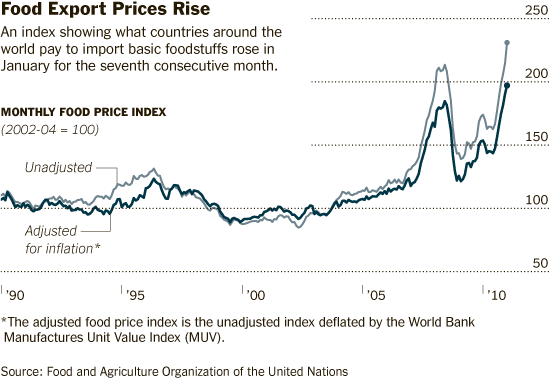Demand is the willingness to buy; that is to pay for some return.
![]() he
Principle of Diminishing Marginal Utility
he
Principle of Diminishing Marginal Utility
"In the same market, at any given moment, there cannot be two prices for the same kind of article."
W. S. Jevons
The arguments below, while Made by professors at the University of Toronto, are adaptable to environmental health and resource allocation is only if you consider the matrix of relations among marginal benefits and these concepts as far as defining a market in natural objects or functions:
| The Rule | feedback | Some contingent influences | |
|---|---|---|---|
| The law of diminishing returns | |||
 |
positive | negative | externalities |
| cheaper | dearer | commonizing costs | |
| elastic | inelastic | ecological systems services | |
| distribution | poverty | income inequality | |
| boom | bust | economic cycles | |
![]()
Are food, medicine, fuel, or water just like every other kind of commodity?
 "Armed with the concepts of marginal analysis, neo-classical theorists
were able to explain more clearly how some of the basic relationships identified
by their classical predecessors actually might work. How much a person will
be willing to pay to obtain an additional unit of a good must be equivalent
to the benefit that person expects to derive from it. The value of any particular
quantity of cabbages to the consumer can be observed by looking at how many
they would be willing to buy at different prices. The more cabbages they acquire,
the less they value additional units of cabbages."
"Armed with the concepts of marginal analysis, neo-classical theorists
were able to explain more clearly how some of the basic relationships identified
by their classical predecessors actually might work. How much a person will
be willing to pay to obtain an additional unit of a good must be equivalent
to the benefit that person expects to derive from it. The value of any particular
quantity of cabbages to the consumer can be observed by looking at how many
they would be willing to buy at different prices. The more cabbages they acquire,
the less they value additional units of cabbages."
 • "Evidently,
as the consumer acquires additional cabbages, the price the consumer is willing
to pay becomes less. Why? Because, the more
the consumer has of a good, the less benefit ("utility") will be derived
from having an additional unit of it. This is true of perishable goods like food as well as durable goods, or fuel that is consumed in acquiring goods and services."
• "Evidently,
as the consumer acquires additional cabbages, the price the consumer is willing
to pay becomes less. Why? Because, the more
the consumer has of a good, the less benefit ("utility") will be derived
from having an additional unit of it. This is true of perishable goods like food as well as durable goods, or fuel that is consumed in acquiring goods and services."
•• "Notice that as the consumer acquires more of a good, the total benefit (satisfaction,
utility, call it what you will) obtained from it continues to increase. What
begins to decrease is the incremental (change in the total) or marginal benefit derived from having additional units of it. The sixth
head of cabbage yields less benefit than the fifth and the fifth less than the
fourth. This is the principle of diminishing marginal utility, which was introduced
above."
I. "Because
the additional benefit becomes less and less, the consumer is willing to buy
additional cabbages only if the cost of acquiring them also is less. That is,
only if the price is lower.
II. "This analysis can now begin to yield some useful insights into how consumer choice operates. While a consumer’s total benefit from all the units of
a commodity he or she would be willing to purchase over a range of prices is significant, it is not as interesting as what goes on at
the 'margin' where the change in the total is taking place.
At some
point the consumer will stop buying additional units of any particular
commodity and begin spending instead on some other commodity.
(Think of the consumer having a kind of mental shopping list on which the various commodities needed are listed in descending order of importance.)
This point is reached when the benefit the consumer expects to derive from the last unit of the one good, relative to its price (what has to be given up to obtain it) becomes equal to the benefit the consumer expects to derive from the first unit of the next most desired good on that consumer’s shopping list, relative to its price."
III. "If the prices of all goods were the same, there would be no need to specify "relative to its price" in the preceding statement, for then the consumer would be able to compare the marginal benefits of the goods directly."
"But, in fact, prices of different goods are usually quite divergent and this must be taken into account."
IV. "Relating marginal benefit to the price
of each good makes it possible to identify the marginal
benefit per unit of income spent even when the prices of goods are different.
"Now that it has been shown how the consumer goes about deciding when to stop
buying additional units of the most preferred good and switch to buying units
of the next most preferred good on the shopping list, it is a short step to determining where the consumer will end up.
"Given a sum of money to spend shopping, the objective for any rational consumer must be to obtain the maximum possible amount of benefit for the income spent."
"How would such a rational consumer allocate spending over the range of goods [or services] needed?
"The answer is simple, especially if there are only two goods to consider. The consumer should distribute total spending in such a way that the marginal benefit (MB) derived from each good, relative to the price of the good, is the same. Why? Because if it were not, total benefit could be increased by switching some spending from the good with the lower marginal benefit to the good with a higher marginal benefit. Doing so would, of course, reduce the marginal benefit of the good which had the higher marginal benefit and increase the marginal benefit of the good which had the lower marginal benefit."
"The same thing could be expressed more economically as follows: the consumer should so allocate spending among the two goods that MB of A/price of A = MB of B/price of B."
"If there are more than two goods, simply expand the expression accordingly: MB of A/price of A = MB of B/price of B = MB of C/price of C ...etc."
for further reading. see:
The "quotation marked sections" above were taken originally from these sources identified below [no-longer operative] and adapted from the University of Toronto by me to demonstrate the limits and the application of paying for natural assets.
 www.chass.utoronto.ca/
~reak/eco100/100_3.htm
www.chass.utoronto.ca/
~reak/eco100/100_3.htm
http://animationeconomics.com/Supply%20and%20Demand/Slide10.JPG